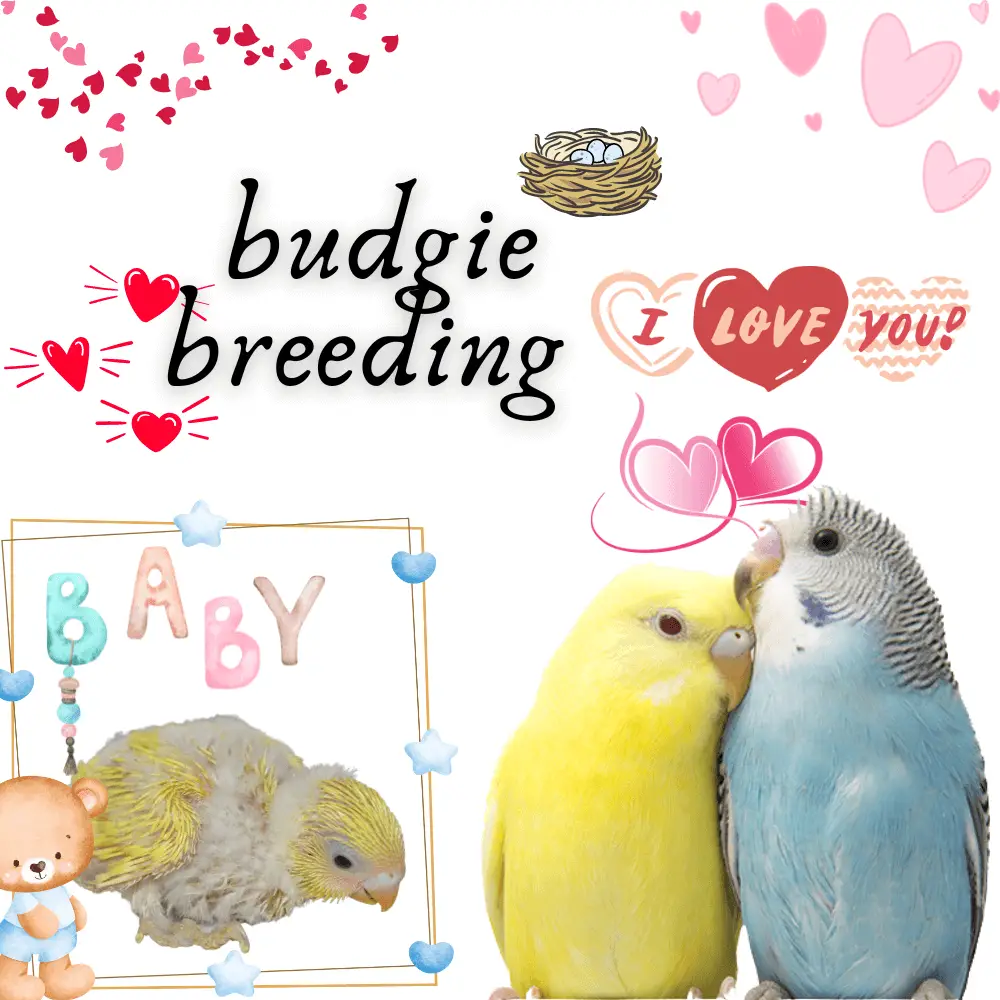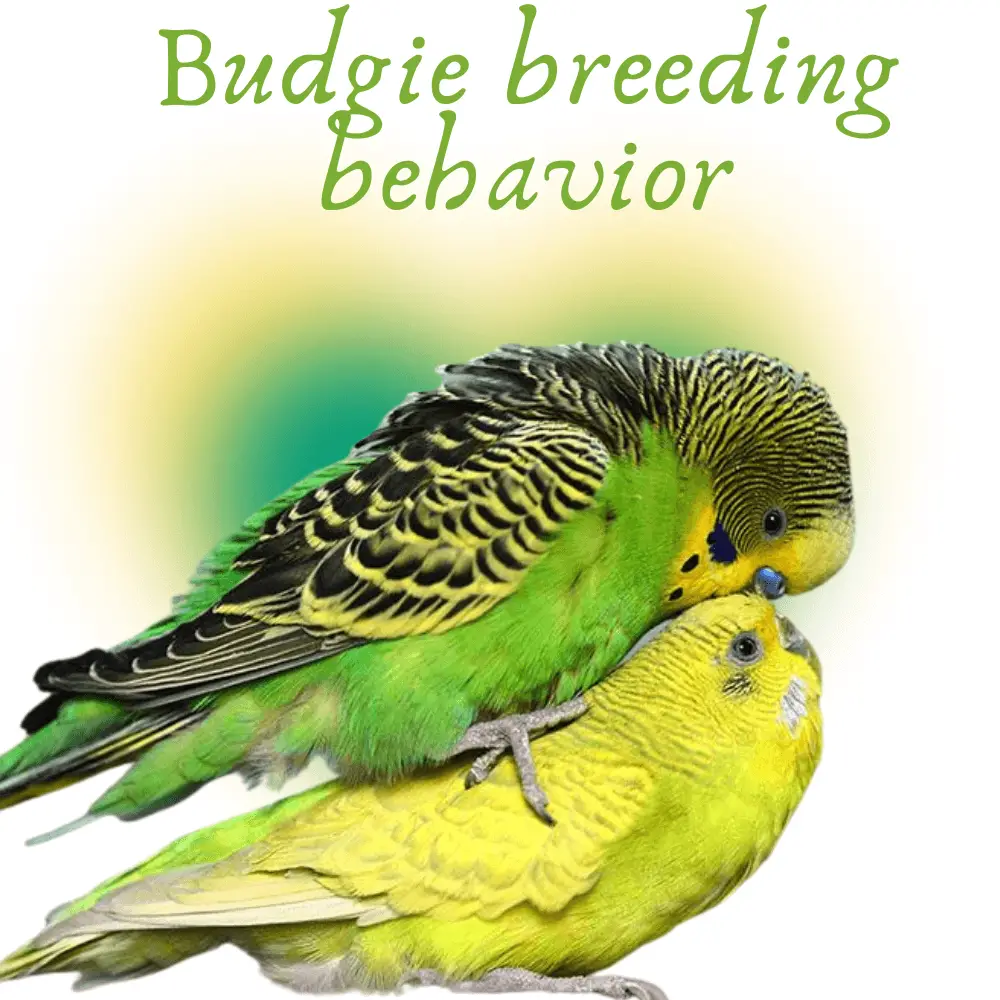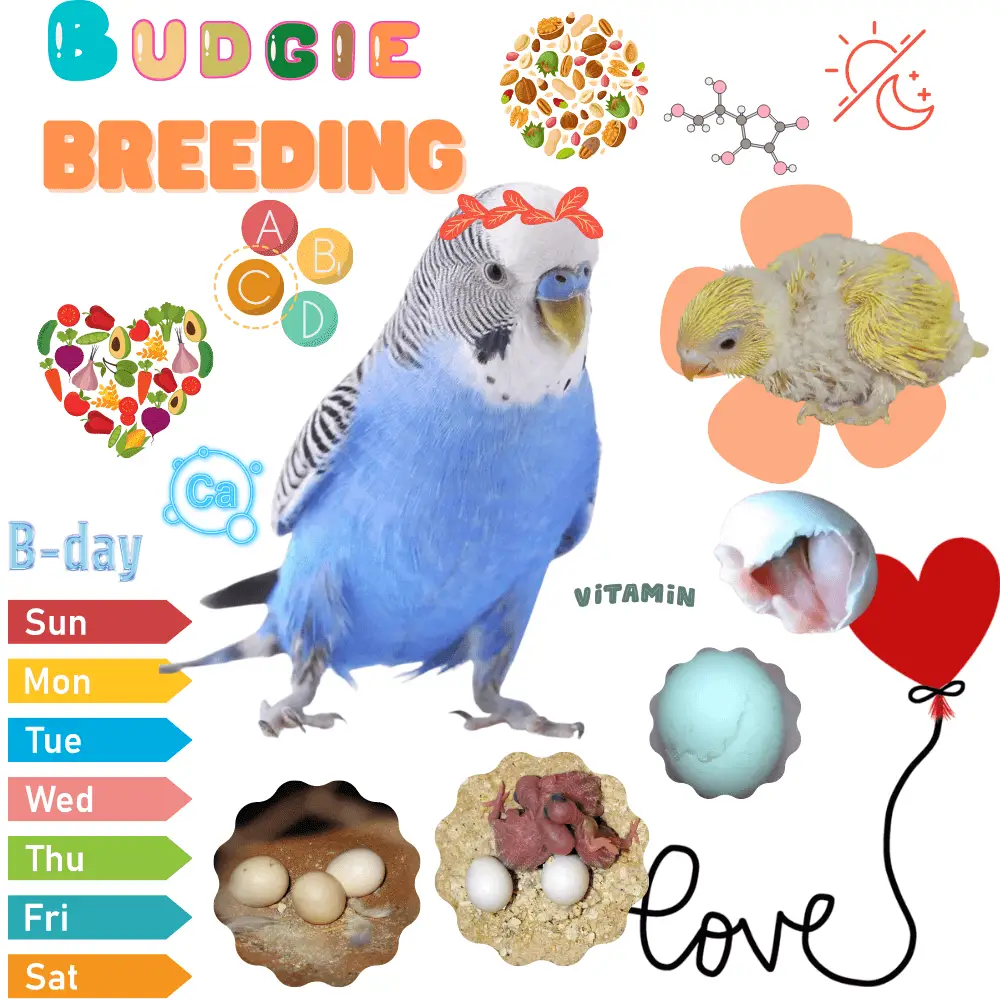Budgie breeding: The budgerigar, native to Australia, is one of the easiest birds to live with. This is one of the reasons why it is appreciated in our homes. This brightly colored, sociable bird lives between 12 and 15 years. Talkative and lively, they are warm life companions.
The mating season is approaching, and you are wondering how to promote the reproduction of your couple.
Budgie breeding season
Budgies are ready for breeding when they are 12 months old. This maturity is noticeable in the color that their wax takes (soft, fleshy bulge found at the upper part of the base of the beak):
- it will be brilliant blue in the male
- and beige or dark brown in the female.
This color difference is called sexual dimorphism and helps to differentiate the sex of birds.
As with most birds, the budgie breeding season is in the spring. The sun is coming back, nature is coming back to life after the long winter period: it’s time to procreate!
How to prepare their environment for reproduction?
Budgie parakeets need their cage bathed in natural light, if possible at least 10 hours a day. Many other parameters must be taken into account to ensure the best conditions for giving birth to young birds: food, nest, and cage accessories.

Budgie food
Plan a diet for budgies enriched with protein and calcium a good month before budgie breeding season.
Provide your couple:
- suitable seed mixes,
- fruit (apples, pears, oranges),
- green and orange vegetables rich in beta-carotene,
- cooked legumes and cereals,
- even flowers like dandelions,
- crumbled hard-boiled egg,
- sprouted seeds.
Once or twice a week, you can add protein-rich egg food.
Let’s not forget the minerals! You can hang a cuttlebone from the bars, and place shells and oyster shells on a little sand at the bottom of the cage, for maximum calcium intake.
Budgie nest
The nest is horizontal. Placed in height, the dimensions are approximately 25 cm in length, 15 cm in width, and 20 cm in height with a small round opening on the front of 5 cm. As nesting material, line the ground with a mixture of peat and wood shavings with 1/3 peat and 2/3 shavings.
Nest hygiene is essential. This is why it must be cleaned every two or three days, from the moment the young are born. The operation must be done fairly quickly because the chicks cool quickly. Be careful not to touch the eggs too much and not to move them, because the parents must recognize them to take care of them.
Budgie cage
To ensure an impeccable environment conducive to mating, make sure you have equipped your cage with all these accessories :
- drinking troughs so that they can quench their thirst. The water should be changed daily. Bowls also work.
- feeders: either a classic bowl placed on the ground or to be hung on the cage grids with free access to food. Distributor feeders also exist. They are more hygienic and economical.
- bathtubs: so that they can wash, and moisturize their feathers.
- perches: in natural and raw wood, with bark. Do not hesitate to cut apple, pear, or birch branches and build a real course there with rope rings, and cotton ropes. They love toys.
Just like the nest, the cage litter should be cleaned regularly, to ensure good hygiene for your couple and their future parakeets.
Budgie breeding behavior

Budgie Parakeets feed more, sing, and are more active in general.
The display of the male is particular. It’s as if he was giving her a bite! He first approaches his female by showing off, chirping, and giving light pecks against hers.
The female, on the other hand, tends to insist on the perch, the toys, the cuttlebone, and the vitamin blocks. She is doing her fangs!
Once she accepts the advances of the guy, she flattens herself to let him climb on her ass and do her thing! Mating does not last more than a few minutes.
Budgie egg laying signs
The female lays her first egg a week after mating. She lays between 3 and 6 eggs. The incubation period is about three weeks. Let’s take a look at the stages of budgie development :
- at birth, they have no feathers and have closed eyes. The female feeds them while the male takes care of his female;
- at 2 or 3 days, the down forms on the baby budgie;
- after a month, the young are already endowed with their full plumage and begin to leave the nest to explore the surroundings;
- from 6 weeks they are weaned;
- from 2 months, they are able to flutter, after having muscled their wings. They thus become independent.
Remember to remove the nest as soon as the last fledgling is gone, as budgie breed all year round. If you have an indoor aviary, it is important not to exceed 2 broods per year.
SOURCE: Alen AxP

